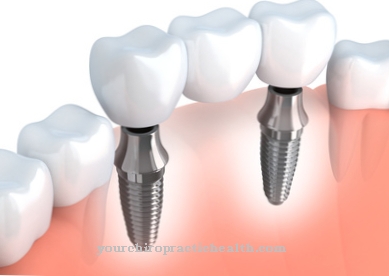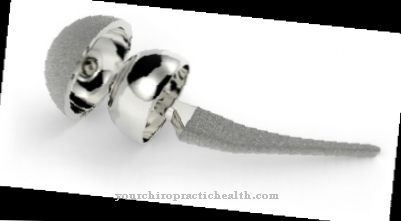Composite or composites are filling materials from the dental practice. They are used to place fillings, attach crowns and root posts and carry out ceramic improvements. The materials are mostly used in the anterior region. In the meantime, however, there are also substances with a higher packing content that can also be used for posterior teeth.
What is composite

Composite has almost completely replaced the previously common amalgam filling, as amalgam is said to pose health risks due to its mercury content.
Composites consist of several high-tech composite materials. The main part of about 80 percent is made up of ceramic, glass and quartz particles. Only 20 percent make up the actual proportion of plastic. As a result, the filling material has gained stability.
In contrast to the amalgam fillings, composite fillings are not stuffed, but applied in layers and glued. Thanks to the nature of modern composites, they can withstand high mechanical loads and are very abrasion-resistant. On average, a composite filling lasts at least seven years.
Shapes, types & types
The material from which the composites are made is based on plastics that arise from an acrylic base. These include BisGMA, TEGMA, EGDMA, UDMA and methacrylate. It can also contain traces of acids, formaldehyde and glutaraldehyde. Particles of glass, quartz and ceramics serve as fillers. Silanes improve the coating with the plastics.
There are three types of composites. The conventional composites with large fillers, also called macro fillers. They are made of quartz, glass or ceramic with a size of one micrometer. There are also microfiller composites with the finest microfiller. They consist of silicon dioxide with a size between 0.01 and 0.04 micrometers. As a third variant, there is the hybrid composites, which consist of the two micro-fillers and macro-fillers. These state-of-the-art composites contain between 85 and 90 percent macro fillers, the rest consists of micro fillers. This combination ensures an increased packing density.
There are further subdivisions for hybrid composites. There are hybrid composites with a mean packing of up to ten micrometers. Furthermore, there are fine particle hybrid composites with a packing size of up to five micrometers, followed by the finest particle hybrid composites with a packing size of up to three micrometers and finally the submicrometer hybrid composites with a packing size of less than one micrometer.
Structure & functionality
The first generation of composites was based on a combination of paste and liquid. This type of polymerization has proven to be disadvantageous in several respects. With this combination it was not possible to apply layers, the curing time could not be controlled and the plastics were not color-stable. That is why there are light-curing composites today.
The curing process is started with the curing light, which emits blue light. With this cold light source in a certain wavelength, a chemical process is stimulated that sets the curing process in motion. A major advantage of the light-curing variant is the higher degree of curing and the significantly better color stability, which is particularly important in the anterior region. In addition, the materials can be processed and modeled as long as is necessary for the respective individual case. The application of several layers is also possible. Only the targeted use of light sets the final curing in motion.
If treatment with light-curing composites is not possible, which is often the case with opaque materials such as those used for partial and full crowns or ceramic inlays, dual-curing composites can be used. Only the edge areas are cured with the curing light. Chemical polymerization is then used in the areas inaccessible to light.
You can find your medication here
➔ Toothache medicationMedical & health benefits
Composite fillings can be performed in one session without the help of a dental laboratory. Once the tooth decay has been removed by the dentist, the tooth is restored layer by layer. The different natural shades of color make a lifelike reconstruction possible, so that after polishing the filling can hardly be distinguished from the actual tooth substance.
The advantages over the earlier amalgam fillings are not only the health benefits, but also the better stabilization of the tooth and the coloring. However, plastic fillings are more complex than amalgam fillings, as the composites have to be applied in several layers and hardened in layers.
Compared to ceramic fillings, composite fillings have the advantage of being more cost-effective and less time-consuming, as impressions are required for ceramic fillings. The number of plastic fillings is increasing rapidly, as amalgam fillings are considered harmful to health.
In the meantime, however, a possible problematic effect of the composites is also being discussed. Assumptions are made about toxicity, mutagenicity, estrogenicity and allergies caused by the composites. However, apart from allergies, nothing of the kind has so far been proven in studies.
The plastics BisGMA and UDMA are not mutagenic in their cell cultures, unlike TEGDMA, where mutagenicity has been demonstrated in cell cultures. However, a very high concentration is required, something that does not occur with tooth fillings. An estrogenic effect could also not be proven. BisGMA contains bisphenol A, which has a pseudoestrogenic effect, but this has not yet been proven in the mouth area.

























.jpg)


